Nyköpingshus has a long and sometimes very dramatic history. This medieval castle was transformed in the 16th century into a Renaissance castle, which was destroyed in a fierce fire in the 17th century. It was the site of the famous "Nyköping guest bids", many people were imprisoned here and today it serves as a museum.
Table of contents
Nyköpingshus
Nyköpingshus stands like a mighty ruin in the centre of Nyköping, with the white King's Tower visible in the distance, recalling centuries of Swedish history.

Nyköpingshus is located by the river Nyköpingsån in the centre of Nyköping, about 10 miles southwest of Stockholm.
Nyköping House - a medieval defence castle
Nyköpingshus was built in the 12th century as a medieval defence castle, probably under the leadership of Birger Jarl. Much of what you can see today originates from this time.

Nyköping's gästabud - when the king imprisoned his brothers
One of the most dramatic and best-known events at Nyköpingshus is what came to be known as the Nyköpings gästabud. In 1317, King Birger Magnusson invited his brothers Erik and Valdemar to a party at the castle. The brothers had some disagreement in their history, in the form of the so-called "Håtuna game", but Birger Magnusson believed that they should now be reconciled in a festive manner.
Do you remember the Håtuna game yet?
In fact, Birger Magnusson was neither so kind-hearted nor so forgiving. When the two brothers had gone to bed, he woke them up with the famous line "Do you still remember the Håtuna game?". Erik and Valdemar were then sent to prison, where they died sometime in 1318.
After their deaths, their followers rebelled and Birger was deposed from the throne. Today the 'key' is still a symbol in Nyköping, after the key Birger threw into the river so that no one could free the brothers.

Gustav Vasa took over Nyköping House
In the 16th century, Gustav Vasa took over the castle and had it extended and strengthened, including two or three gun towers. However, the castle retained its medieval character, which only changed when Gustav Vasa's son Charles took over.

Nyköping house became a Renaissance castle
Duke Charles wanted something more modern and exclusive, and had the old medieval castle Nyköpingshus rebuilt into a beautiful Renaissance castle. The castle was equipped with eleven or thirteen ornamental gables, beautiful spires and a fountain.
Duke Charles also created a palace garden, with the latest fashionable plants from Europe, such as basil, marjoram and thyme. One of the few surviving parts of this period is Charles IX's gatehouse, which was restored in the 1920s.

Nyköpingshus was now experiencing a period of splendour and when Duke Karl married Kristina of Holstein Gottorp in 1592, no expense was spared. 600 guests were invited to the feast, which included six and a half elk, 71 oxen, 42 calves, 4014 eggs and four turkeys.
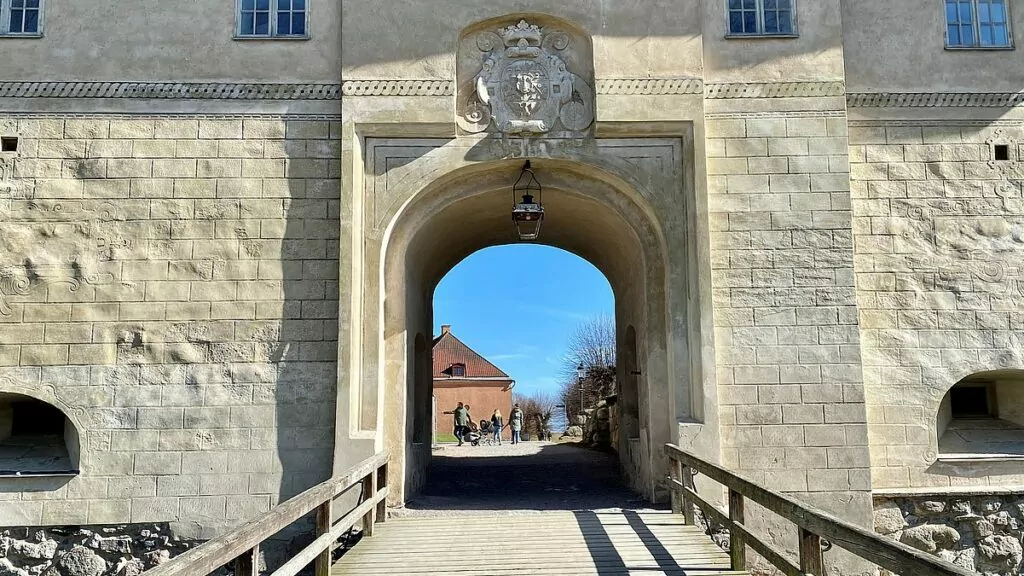


Servants and villagers around Nyköpingshus
Many people lived and worked at the castle, from royalty and squires to servants, craftsmen and maids. The village was home to traders, who had to pay high taxes, but who also benefited from all the commerce around the castle. There are stories about the merchant Bengt Skräddare, who often lent money to Duke Karl.


Violent fire in Nyköping
When Nyköping was hit by a fierce fire in 1665, the impressive castle burned down. It was never rebuilt and the remaining parts were used as a prison and warehouse.

Visiting Nyköpingshus
Under normal circumstances, the King's Tower in Nyköpingshus is open every day during the summer months, and on Sundays during the rest of the year. Various exhibitions are shown here: "Prisoners and correctional officers - Nyköpingshus in the 19th century", "Chess and power" and "The prince". When we were here, however, the tower was completely closed due to the pandemic.

Even when the tower is closed, you can stroll around the outdoor environments at Nyköpingshus and try to imagine periods and events in history, ranging from guest bids and Renaissance castles to major fires and prisons.

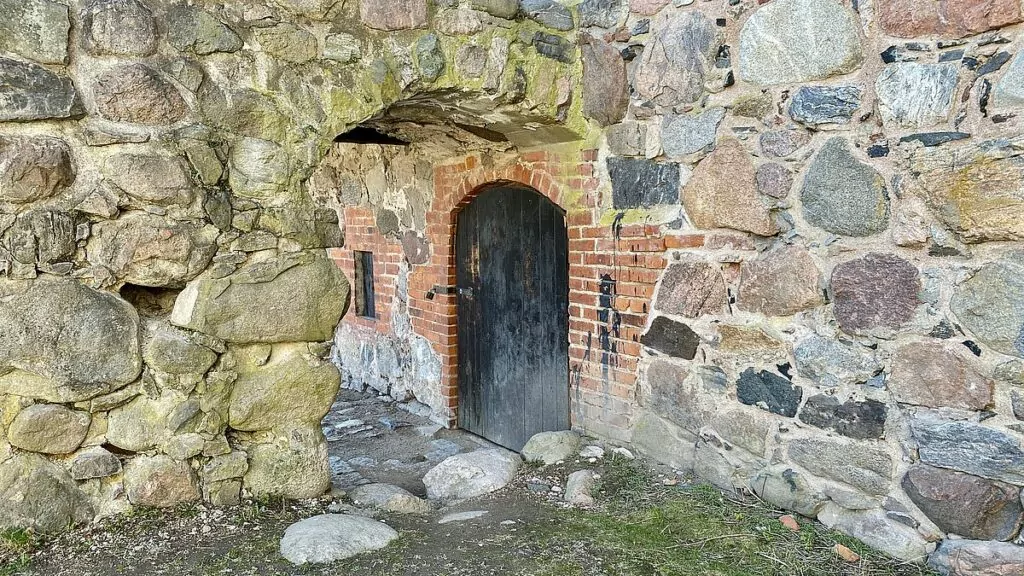

There are plenty of informative displays around the castle, so you can learn more about the lives of both royalty and commoners over the years.

At the time, the restaurants were closed, but there are usually restaurants both in the castle itself and in the Sörmland Museum across the street.

During the summer months, Tovastugan is also usually open with food, coffee and various activities such as boules, barbecue evenings and a children's corner.

More to see and do in Nyköping
There is of course more to see and do in Nyköping where we have been and written down 9 good tips. Nyköping is a nice town to discover on foot, full of signs telling you about its history. You can also visit Öster Malma Castle, Nynäs Castle and the incredibly beautiful Stendörren nature reserve which we have all been to and written articles about.
Where can you park your campervan?
In Nyköping's harbour there is a caravan site with an excellent location for visiting both Nyköpingshus and the rest of Nyköping. There is electricity and rubbish collection, and it is possible that during the high season there is latrine collection. Right now there was a sign that this was closed for the season, but according to a local we spoke to, it has not been open for a long time.
You pay for the car park with an app (EuroPark or Parkster) or by SMS payment. The price should be SEK 100 per day, but when we paid with EuroPark, a service fee was added so the total price for us was SEK 115.
For example, if you are looking for camping, you can look up Strandstuvikens Havsbad och Camping or Jögersö camping, both of which are located on the coast.

Sundbyholm castle - and guest harbour with parking space
Sundbyholm Castle has a history as a monastic estate and royal palace. Today you can come here for hotel accommodation,...
Årsta Castle - with memories of Fredrika Bremer
Årsta Castle is located in Haninge, south of Stockholm, and is perhaps most strongly associated with the author...
Things to do in Nyköping - 9 sights and experiences
What to do in Nyköping? We've visited this lovely town several times over the past...
Gripsholm Castle - a royal castle on Lake Mälaren
Gripsholm Castle is a magnificent and royal castle by Lake Mälaren. Here the rooms remain from the Vasa kings'...
Trosa havsbad and camping - nice on the waterfront
We rolled past the caravan park in Trosa yesterday, which was full of motorhomes, and continued out...
Femöre - barren rocks and military history in Oxelösund
On the way home from Jogersö camping in Oxelösund we took the opportunity to drive past the island of Femöre,...
Julita farm - mansion and open-air museum
Julita Farm is a mansion and open-air museum owned by the Nordic Museum. Currently, the...
Things to do in Mariefred - 17 tips for a charming gem
What to do in Mariefred? This charming little gem offers everything from castles and...
Summer and sun at Malmköping campsite
We have now driven the motorhome to Malmköpings camping. This is a classic caravan campsite: white...
Ericsberg Castle - and other private castles in Södermanland
Ericsberg Castle is one of Sweden's most beautiful baroque castles, and the garden is occasionally open to visitors. Our...
Tyresö Castle - history and beautiful nature
Tyresö Castle is beautifully situated at Kalvfjärden in Tyresö, just south of Stockholm. We went...
Excursions in Stockholm in times of coronavirus - 15 tips
Tips on 15 excursions in Stockholm in times of corona! Because yes, what do you do when you don't...
Taxinge castle - cookie castle in a beautiful location by Lake Mälaren
Taxinge castle, or Taxinge-Näsby castle, is beautifully situated by Lake Mälaren. We came here by motorhome on...
Jogersö camping and sea bathing - open all year round
Now we are finally out with the motorhome again! We both have a lot of work to do...
Skogskyrkogården in Stockholm - a Unesco World Heritage Site
The Forest Cemetery in Stockholm is one of the Swedish World Heritage Sites on the UNESCO World Heritage List. We often check...
Ringsö in Lake Mälaren - a Swedish idyll
We spent Monday and Tuesday this week on the island of Ringsö in Lake Mälaren. Our friends...
Häringe castle - fine castle hotel in Södermanland
Häringe Castle is located just south of Stockholm and is a castle you visit for lovely weekend packages,...
Malmköping swimming and camping
Malmköpings bad och camping is beautifully located by Hosjön. This is a 4-star campsite with good...
What to do in Trosa - 9 tips for a picturesque gem
What to do in Trosa? We have visited this picturesque town many times. It was...
4 Castles in Strängnäs - and a fortress
We have looked at a bunch of castles in Strängnäs, during our castle trip with a motorhome. Some castles...
Södertuna castle - fine castle hotel in Södermanland
Södertuna Castle is beautifully situated by Lake Frösjön in Södermanland. You come here, for example, to treat yourself to...
Boo castle, Breven's mill and car park in Vingåker
Boo Castle is a beautiful terracotta-coloured palace reminiscent of a fairytale castle. Not too far from here...
Öster Malma Castle - hunting, buffet and wild animals
Öster Malma Castle is a fine little white estate in Nyköping municipality. Here, much is about ...
Lida Friluftsgård and the Adventure Trail around Lake Getaren.
Lida Friluftsgård, located in Botkyrka municipality in Stockholm, offers a fantastic outdoor area with...
Things to do in Strängnäs - 12 sights and experiences
What to do in Strängnäs? We have visited Strängnäs several times, by train, car and...
Tyresta National Park - tips on entrances and trails
Tyresta National Park is a large natural area just south of Stockholm. Here you can experience wild primeval forest,...
Nynäs castle and nature reserve in Nyköping
Nynäs Castle is a beautiful castle in Nyköping municipality. There is also the Nynäs nature reserve, with lovely...
Fishing in Lake Mälaren - a long weekend on the island of Ringsö
We have been fishing in Lake Mälaren this weekend. Our friends have a summer house on the island...
Stora Sundby Castle - fairytale castle on the banks of Lake Hjälmaren
Stora Sundby Castle is a fairytale castle with turrets and towers, beautifully situated on the shores of Lake Hjälmaren....
Hjälmaregården - campsite by Lake Hjälmare
Hjälmaregården is idyllically beautiful in Läppe, on the southern shore of Lake Hjälmaren (not far from Vingåker). Here are...
Tullgarn Castle - in the footsteps of kings and tsars
When we went home on Sunday from our motorhome weekend at Jogersö, we needed a place to...
Stendörren nature reserve - with suspension bridges between islands
Stendörren Nature Reserve is a magical coastal paradise located between Nyköping and Trosa. The water is crystal clear...

Have you ever visited Nyköpingshus?
Have you visited Nyköpingshus? Tell us about your experience! Maybe you have even more tips on things to see and do at Nyköpingshus or nearby?
Facts about Nyköpingshus
- Landscape: Södermanland
- Municipality: Nyköping
- Completion: The Middle Ages
- Read more: You can find more information at State Property Agency and on Sörmland Museum.
Activities and tours
- Exhibitions: 'Prisoners and correctional officers' (19th century), 'Chess and mate' (14th century) and 'The Prince' (Duke Charles).
Services and practical information
- Opening hours: The King's Tower is usually open every day during the summer and on Sundays during the rest of the year. Please note that the pandemic may affect these opening hours.
- Prices: Free entry to all exhibitions and screenings.
- Toilets: There are small toilets and changing tables. There is a large toilet at Tova Cottage, about 200 metres from the King's Tower.
- Food service: There is a restaurant and café at Sörmland Museum (on the other side of Hamnvägen). It is also possible to have a picnic in the green area at Nyköpingshus.
- Shop: The King's Tower has a museum shop with souvenirs.
Accessibility
- Toilets: There is a large toilet at Tovastugan, about 200 metres from Kungstornet.
- Accessibility: There is a gravel path to the entrance. There is a staircase up to the door. The King's Tower has four floors, with no lift.
- Sound and light: The lighting in the room is dimmed. A hearing loop is available.
Find Nyköpingshus
- Address: Vallgatan, Nyköping.
- Car: Nyköpingshus is located in the centre of Nyköping. Parking spaces are available at Tovastugan, about 200 metres from the entrance.
- Bus: The nearest bus stop is Nyköping bus terminal, about 700 metres from the entrance.
History at Nyköpingshus
- 12th century: The castle was originally a kastal (tower-like defence building) that was added to in stages. The construction was probably started by Birger Jarl.
- 13th century: An enclosure with a rectangular curtain wall was constructed.
14th century
- 14th century: The castle was consecrated by the German knight Raven von Barnekow (during the time of Albrecht of Mecklenburg) and later also by Bo Jonsson Grip.
- 1317: The Feast of Nyköping took place, according to the Erik Chronicle. This Christmas party ended with the death of Dukes Erik and Valdemar, brothers of King Birger Magnusson.
- 1396: At Nyköping House, the Nyköping Recession was signed, which is one of the most important historical events of the Middle Ages in the Nordic countries and was a prerequisite for the formation of the Kalmar Union.
16th century
- 16th century: Gustav Vasa rebuilt and strengthened the castle. Under his leadership, two or three cannon towers were built, but the castle retained its medieval character.
- 1538: A wedding took place at Nyköpingshus between Svante Sture the younger and Märta Eriksdotter Leijonhuvud.
- 1568: Duke Karl (IX) received Nyköping House from his father Gustav Vasa.
- 1573: Duke Charles now had the medieval castle converted into a Renaissance castle. The architect was first the German-Italian Christopher Pahr and later Hercules Mida.
- 1592: Duke Karl married Kristina of Holstein Gottorp and invited 600 guests to an impressive wedding party in the beautiful castle.
17th century
- 1611: King Charles IX died in the castle.
- 1622: Charles X Gustav was born at the castle.
- 1665: The castle burned down along with the city, and was not rebuilt. What remained of the castle was used as a prison and storehouse. Among other things, a debtor's prison (prison for people in debt) was built.
19th century to present
- 1818: The prison was extended by a stone building at the gatehouse. This was no longer an exclusive place, but was home to orphanages, poorhouses and madhouses.
- 1918: The first museum opened in Nyköping House.
- 1920s: Charles IX's gatehouse, one of the few remaining parts of the Renaissance castle, was restored.
- 20th century: The palace continued to be refurbished and now houses the Sörmland Museum's permanent exhibitions in the King's Tower, as well as a restaurant in the Guest Hall and the Queen's Cellar.
- 2020: A previously unknown room was found in the castle, which is believed to be a so-called casemate (defence room for battle positions).
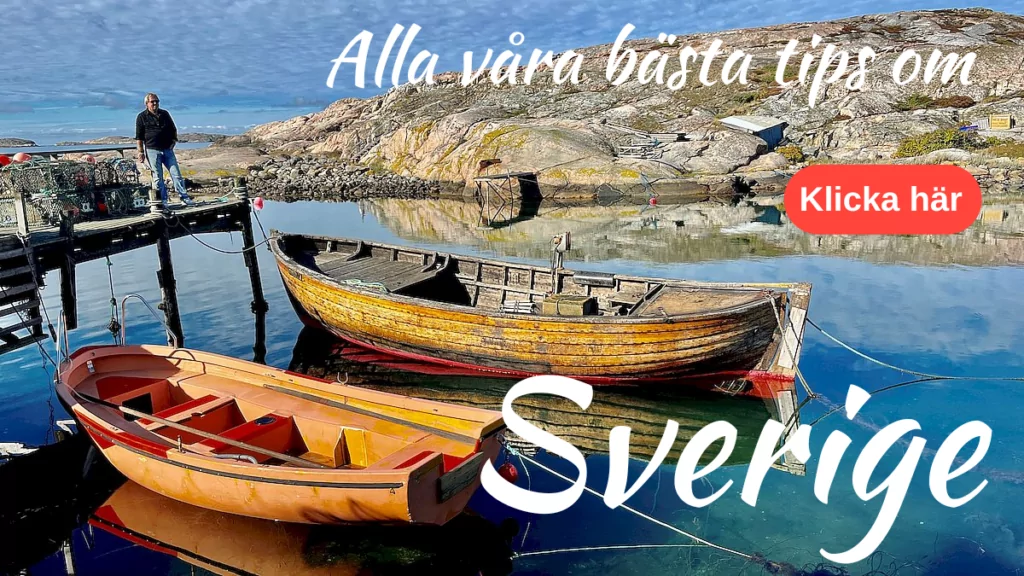


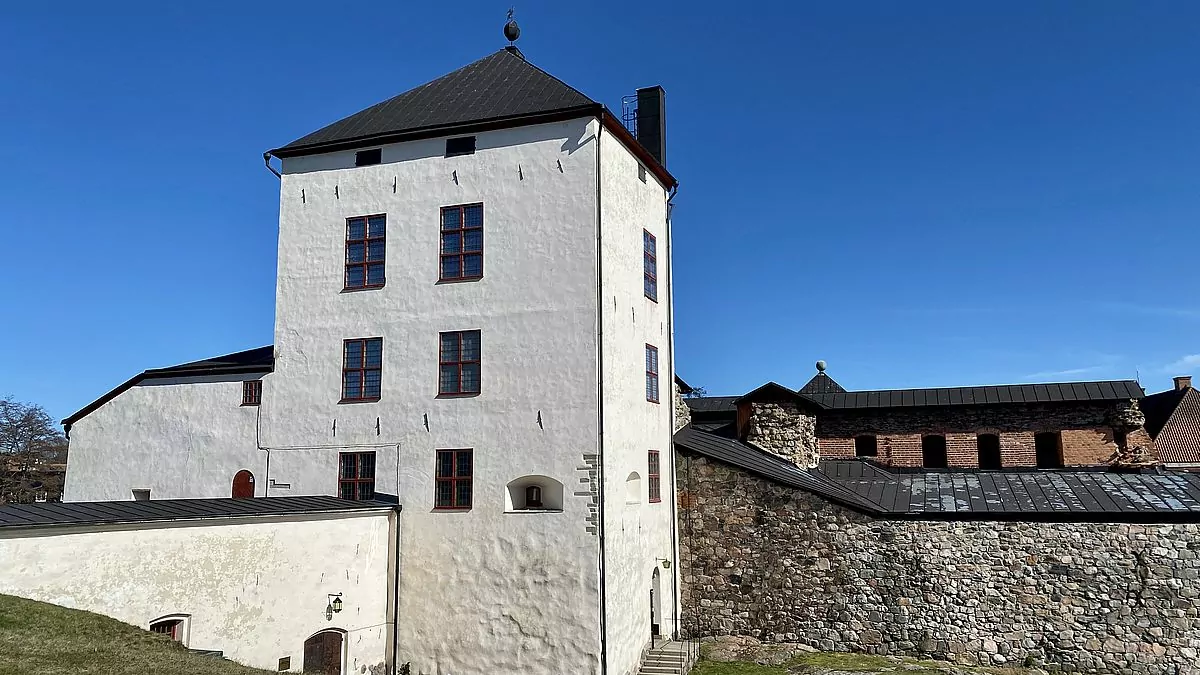




















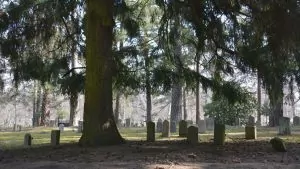










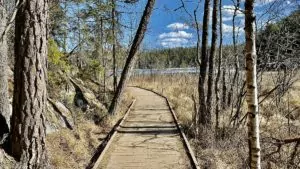







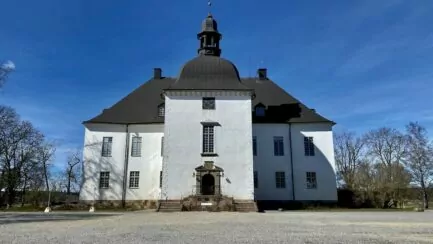



Inga+Magnusson says:
Roland's ancestors, the de Besche brothers, nobility from Liege, are said to have been the first Walloon family to come to Sweden. They were active in Nyköping as architects (including Nyköpingshus) and mill owners. They owned several mills, including Nävekvarns. The De Besche grave is in Allhelgonakyrkan in Nyköping, a stone slab inside the church with a text about them. We have of course also visited Öster Malma nearby. It is the Hunters' Association's farm with accommodation, meeting rooms, beautiful exhibitions and, under normal circumstances, a restaurant with a fantastic menu of game. We have been there a few times, of course. It is usually possible to rent hunting opportunities in the vicinity if you want to.
28 April 2021 - 7:38
Helena says:
But how interesting to discover these areas in relation to your own family history! The history of Vallon is interesting! We also visited Öster Malma. I haven't had time to write about it yet, but I will!
28 April 2021 - 14:14
Solan says:
Now I'm behind, I only read about the fantastic Stendörren today.
Good with your tours, the memory is refreshed for the rolling. On Saturday, the motorhome will leave the barn. Interesting to see how it feels ... thinking about mice and other misery! 😉
You are phenomenal with travel tips, both long and short. Highest possible score! 🌍
28 April 2021 - 8:13
Helena says:
But oh what a nice comment, thank you so much! The stone door was an incredibly nice experience!
28 April 2021 - 14:15
Ann-Louise Paulsson says:
Have not been and seen Nyköpingshus yet (however, write it up on the to-do list for the summer) more than from a distance as I stayed a few nights at the Clarion hotel on the other side of the river. Then I was there at work so did not have time for much sightseeing but we had dinner at Rökeriet which is seen in one of your pictures above. Remember so well how we sat out by the water and looked towards Nyköpingshus and saw one of the most beautiful sunsets I have seen.
28 April 2021 - 9:09
Helena says:
It sounds nice!!! 🙂 Nyköpingshus was interesting to visit! And maybe even more interesting when the tower and exhibitions are open!
28 April 2021 - 14:16
Ama de casa says:
We went to Nyköpingshus many years ago. I remember that I thought it was both nice and well preserved and your pictures confirm this 🙂.
28 April 2021 - 9:22
Helena says:
Exciting historical site! 🙂
28 April 2021 - 14:16
Lena+in+Wales+and+Spain says:
What a nice tour and very interesting history.
I have visited Nyköpingshus, but it was probably about 10 to 15 years ago. It certainly looks the same then as now, but my memory doesn't always keep up and I had forgotten a lot.
As I've mentioned before, I like listening to podcasts, mainly about history, so the Håtuna play and Nyköping's gästabud were another good rehearsal.
Take care!
28 April 2021 - 12:49
Helena says:
Yes, the building is probably the same! Then things may have happened with the exhibition in the tower and the like, but unfortunately we could not see it now - Still an interesting visit!
28 April 2021 - 14:17
BP says:
What solid research. Impressive! Oh what great weather you had on your various road trips. As usual, great pictures and lots of info. There is so much I had no idea about ...
28 April 2021 - 19:56
Helena says:
Mostly very nice weather! But then snow came ... will be visible on the next post 😉 .
29 April 2021 - 9:53
Lena - good for the soul says:
I was there in 2015. Remember there was a toilet in the dining room. They had an OPEN toilet in the dining room. Apparently there were no inhibitions in those days. 🙂
Hug Lena
05 May 2021 - 5:51